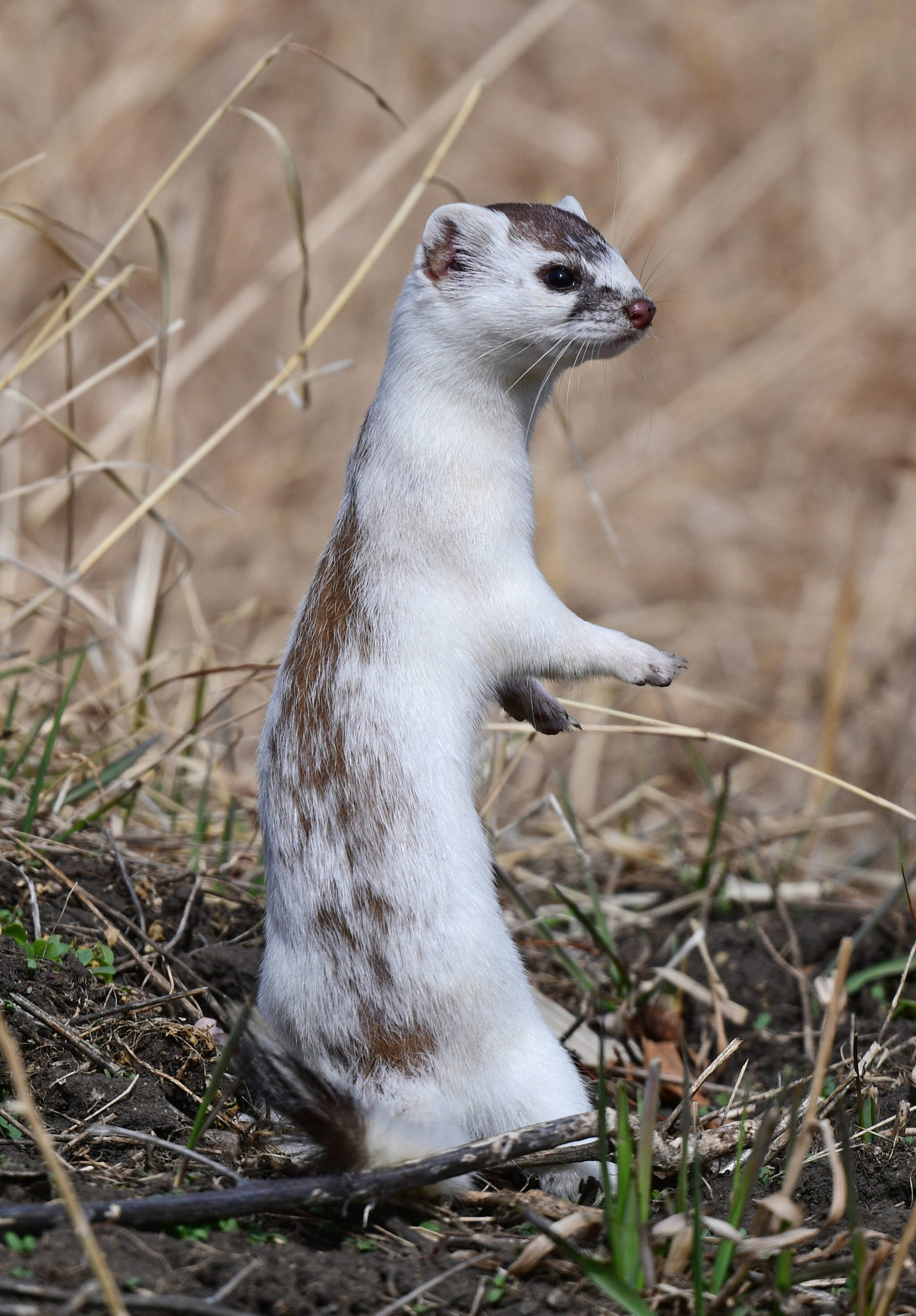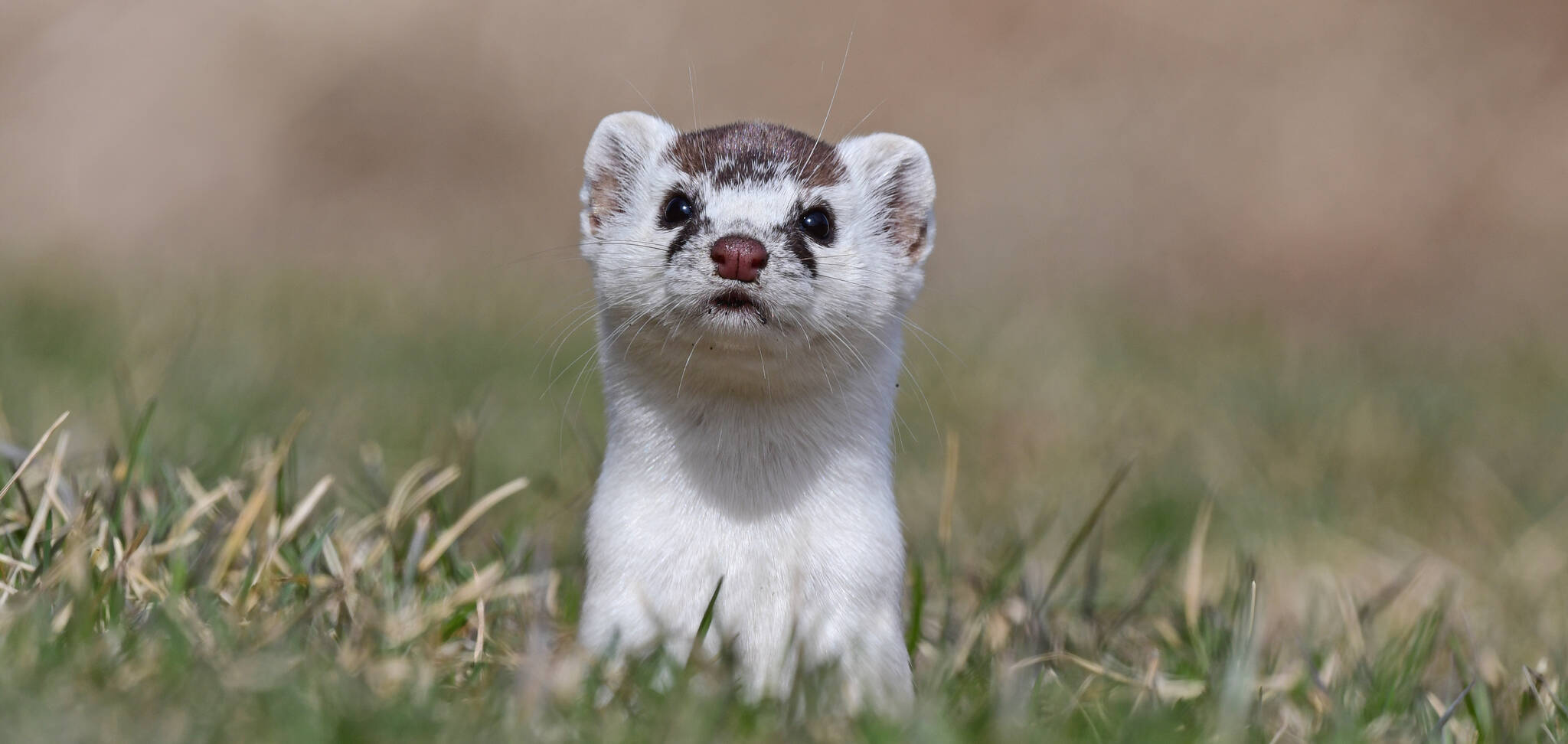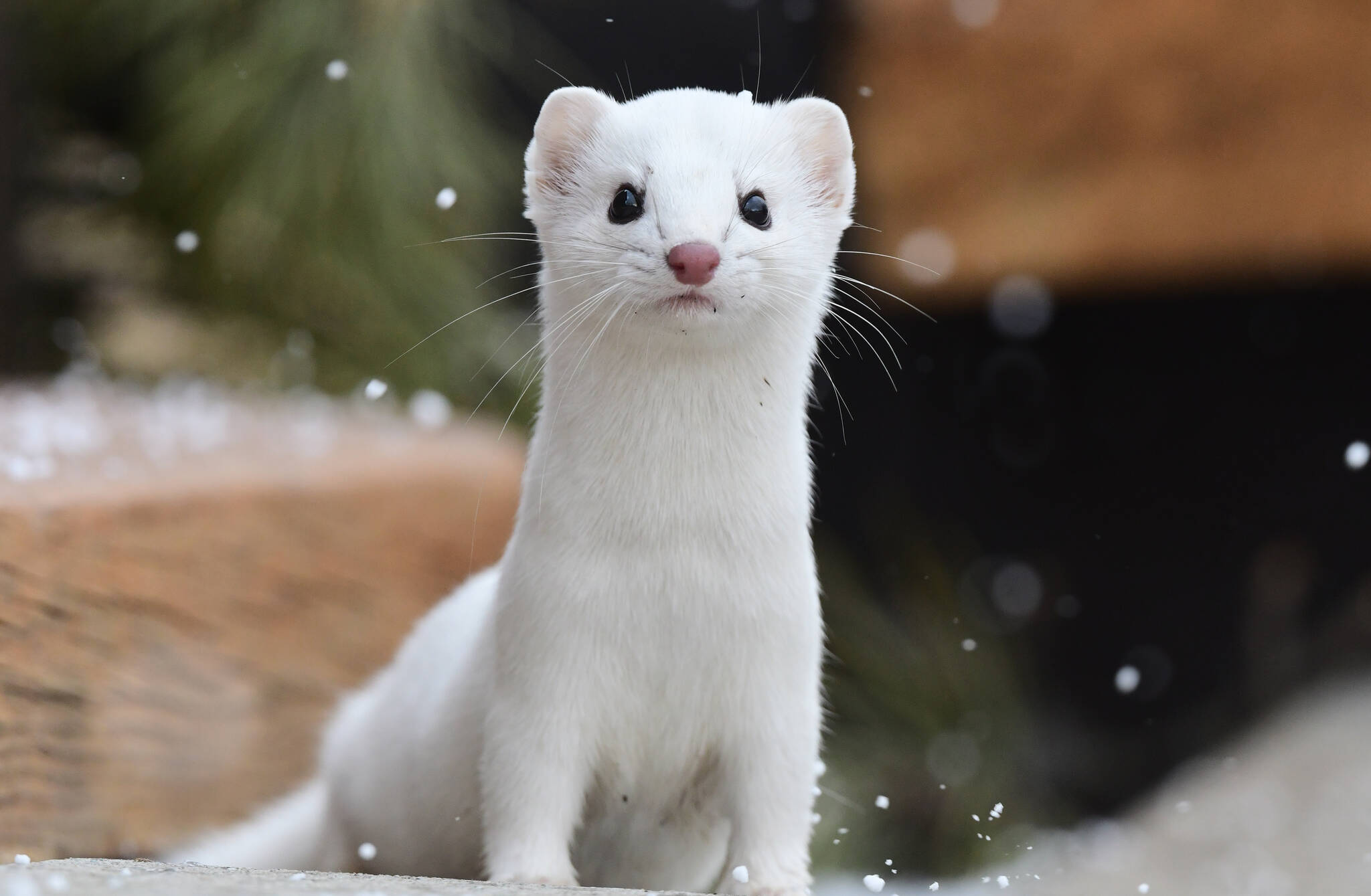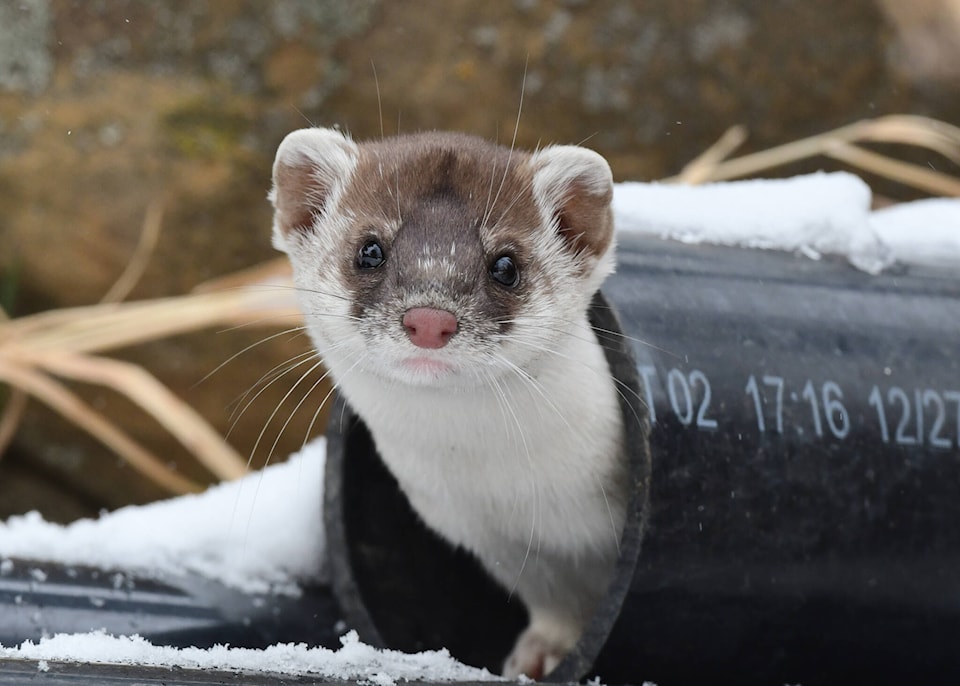I have had the recent good fortune to spend some quality time observing and photographing a long-tailed weasel.
This weasel, named “Nod” by his human neighbours, has been hanging around a residence south of Calgary. When I first photographed Nod on March 24, he was still snow white. On my last visit, April 21, he looked like a completely different creature.
We have been privileged to watch Nod undergo one of two annual moults; in April and May, Long-tailed Weasels (and their cousins, Short-tailed Weasels and Least Weasels) transform from their winter white pelage into a two-toned brown/tawny colour. In October and November, they moult back to pure white. Each moult takes three to four weeks, with mismatches often occurring between pelage colour and the surrounding landscape. Since snow had long melted in the Calgary area by mid-April, Nod’s motley white and brown coat revealed him as a frenetic little beacon zipping around against the still-brown grass.
A ferocious and active predator that hunts by scent and prefers to eat fresh prey, the Long-tailed Weasel feeds primarily on small rodents but has been known to tackle mammals as large as hares. Other prey includes small birds, bird eggs, reptiles, amphibians, fish, earthworms, insects and even bats.
Long-tailed Weasels mate in July and August, but the implantation of the fertilized egg onto the uterine wall is delayed until March. Although the gestation period lasts 10 months, embryonic development takes place only during the last four weeks. This timing results in the young being born in April and May, when small rodents are most abundant.
It has been an interesting experience watching Nod because his hunting schedule follows no set pattern. Some days he is a no-show; other days, he entertains by being visible and active for hours at a time. Before observing Nod, who often scurries up tall trees, I was not aware that weasels are as adept at climbing trees as they are exploring underground.
During the winter, Nod caught voles and mice, but by mid-April he turned more of his attention to exploring the many ground squirrel and pocket gopher dens in the area. Most recently, he has taken a keen interest in a large woodpile and seems to be using a nestbox for occasional naps. Who knows if he will continue to call this area home, or if he will move on to other environs? It has been a rare and wonderful treat to have had the opportunity to be in his company!
Myrna Pearman is a retired biologist, nature writer, photographer and author of several books. Her books are available at www.myrnapearman.com. She can be reached at myrna@myrnapearman.com.



